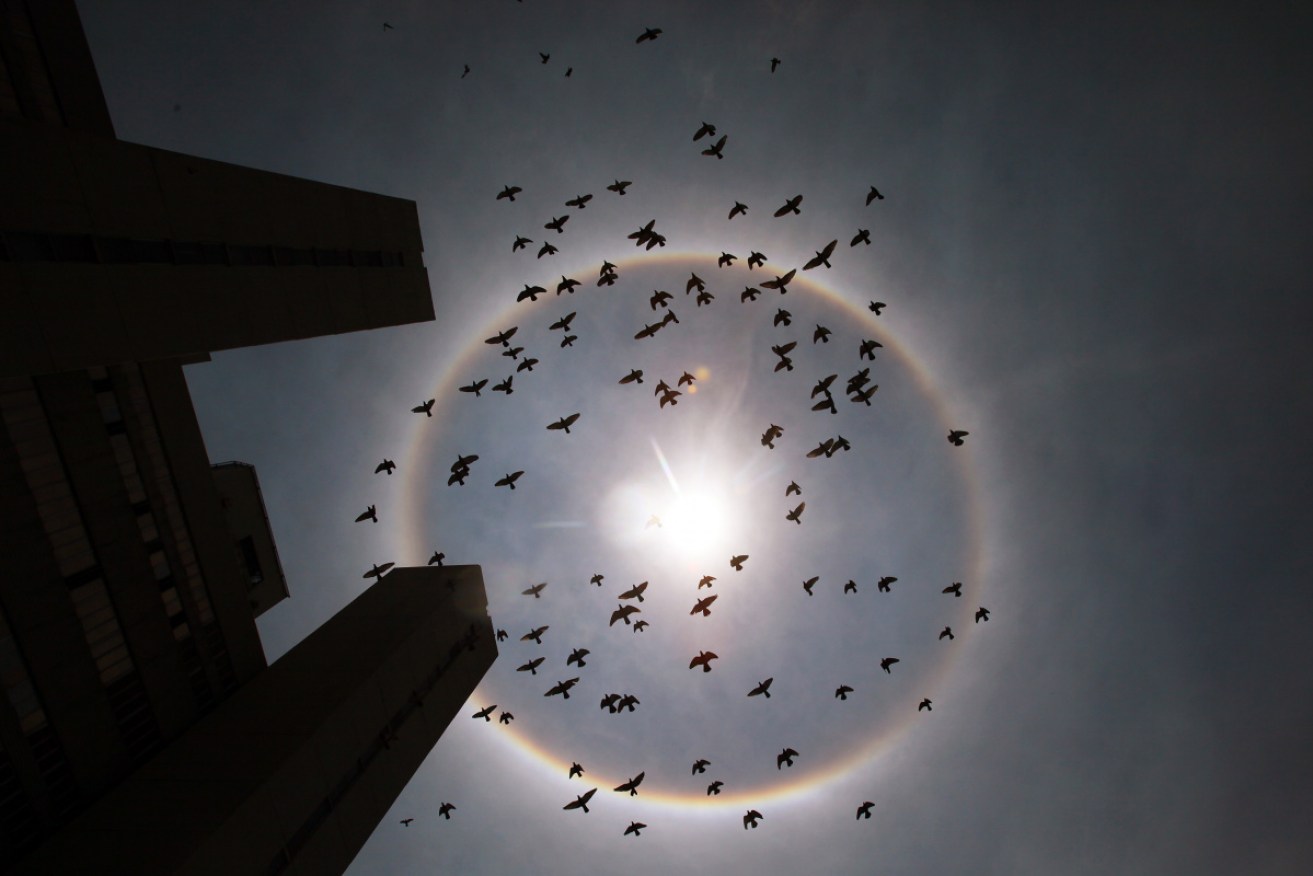We just touched the sun: And weirdly the world is colder for it


Evert year, in the first days of January, we make out closest approach to the sun. Photo: Getty
At 4.19pm on Thursday, the earth made its closest approach to the sun – nearly five million kilometres closer than we were in the dead of winter. No wonder it’s as hot as hell, right?
Not really. The truth is stranger. In the first days of January every year, the Earth reaches this point in its orbit, known as perihelion.
This occurs because our orbit around the Sun doesn’t make a perfect circle, but is slightly stretched into an ellipse.
In July, we pull away to the farthest point from the sun, known as aphelion. The extent to which our orbit is elliptical is known as an orbit’s “eccentricity” – and it’s why we have a leap year. We are not that eccentric as far as planets go.

An illustration of the eccentric orbit of the Earth around the sun, and of the moon around the Earth. The Earth’s closest point to the sun is called the perihelion, the farthest point is the aphelion. When objects that travel around a planet reach the closest point to the parent body, this is called the perigee, the farthest point is called the apogee. Illustration: NASA
Winter in the northern hemisphere is only five days shorter than it is in the southern hemisphere. That may seem odd.
This is a consequence of Kepler’s laws of motion that an orbiting body will sweep out equal areas in equal time. That means the object moves a little faster when it is close to its parent body, and moves a little slower when it is farther away from the parent. Because the Earth moves slightly faster around perihelion (what’s happening now) than when it is at aphelion (in July).
Hence the difference in the length of north and south winters. It doesn’t have much effect on how we live.
Some of our stablemates in the solar system have orbits so eccentric that their swing into perihelion and out to aphelion can significantly affect global temperatures. On Mars, the southern hemisphere winter is 24 days longer than it is in the north.
The real quirk in Earth’s up-close and far-away dance with the sun is caused by the 23-degree tilt of our planet.
In summer, at our closest point, the face that we present to the sun is mostly water – the oceans. And that’s where most of the heat is distributed during perihelion.
And because water is a ruthlessly efficient heat bank – it soaks it up and resists giving it up again – the net result is that the Earth’s temperature overall is actually lower than when we are at our farthest point from the sun.
In that instance, it’s mainly land that is facing the sun – and the heat quickly reflected back into the atmosphere. So our planet is hotter.
This orbital paradox serves the Earth well, flattening out the climate swings we’d otherwise suffer. Winters would be severe, summers more startling.
The reality is, from an astronomical point of view, our trip around the sun is practically a circular one. If it was extremely elliptical, our oceans would evaporate and life would be no more.
But our orbits do change.
Michael E. Wysession, professor of earth and planetary sciences in arts and sciences at Washington University in St. Louis, Missouri, has argued that parameters such as planetary gravitational attractions, the Earth’s elliptical orbit around the sun and the degree of tilt of our planet’s axis with respect to its path around the sun, have implications for climate change and the advent of ice ages.
“All planets travel in an ellipse around the sun, but the shape of that ellipse oscillates,” he explained in a 2008 paper. “When the Earth’s orbit is more elliptical, the planet spends more time farther away from the sun, and the Earth gets less sunlight over the course of the year.
“These periods of more-elliptical orbits are separated by about 100,000 years. Ice ages occur about every 100,000 years, and they line up exactly with this change in the Earth’s elliptical shape.”
This theory was first championed by Serbian mathematician Milutin Milankovitch. It was contested in his lifetime, but has since come into favour.
We’re due for another more-elliptical orbit in 12,000 years. Hopefully we’ll still be here to see what it’s like.








